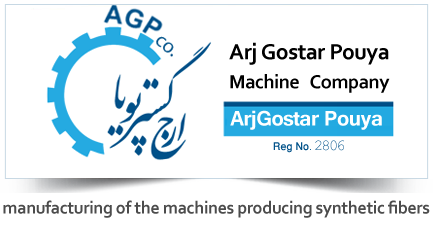Polyester fibers are a group of synthetic fibers made from PET. Depending on the molecular structure and placement and number of polymers used in production, they can be divided into different categories.
Single component polyester fibers are a group of synthetic fibers that are composed of one type of polymer. In this project, single-component polyester fibers are produced from PET.
Due to their high hardness and durability, these fibers are often used as garments, textiles and sleeping goods. Polyester is a strong fiber that resists heavy and continuous movements. Its hydrophobic properties make it ideal for use in wet or damp environments. Also, this product is mixed with synthetic cotton fibers in yarn and textile production systems due to its narrow fibers (low denier), and for this reason, they have been named cotton system. In the production stages, due to the passage of special antibacterial oils and during different stages, it has antibacterial properties, which is an important capability for the production of clothing.
In general, polyester fibers have the following characteristics:
Strength
Resistance to most chemicals
Wrinkle resistant
Abrasion resistant
Easy to wash
Resistance to elongation and contraction
Quick drying
Mold resistant
Good ability to form with heat and ironing
LEO Electron Microscopy Ltd. Fibers:
Fibers are the raw material of the textile industry. The main characteristics of a fiber are its extremely high length to diameter ratio (this feature is more pronounced in the fibers of the cotton system due to its lower diameter), strength, softness, elasticity, dye absorption and spinning ability, which facilitates warping. Giving fibers and thus increases the strength of the yarn. Important characteristics of a leaf:
Length (average length, longitudinal distribution) / cross section (total area, uniformity and shape)
Stiffness (number and range of stiffness) / Spring and surface characteristics
is. A fiber must also have good physical, chemical and mechanical properties. Physical properties include color, polish, specific gravity, specific heat, electrical conductivity and heat, softening point, glass temperature, and mechanical properties include strength, elongation, modulus, elasticity, and reversibility. Also properties such as recycled moisture, swelling, reaction against solvents, chemical change due to heat, resistance to atmospheric factors (oxygen, light, heat, microorganisms), chemical resistance to acid, alkali, oxidizing agents and dye Accuracy is also important.
Due to the diverse use of textile goods, from clothing to industrial uses, there is a need to use fibers with different properties and different methods. There are several methods for classifying properties related to fiber properties, production methods and their end use. However, length and fineness are two important parameters of fiber properties that determine the functional potential and processability of fibers.


© All rights reserved to Arj Gostar Pooya Company.